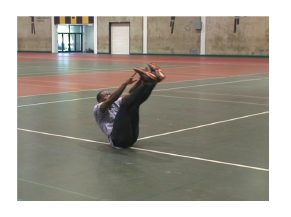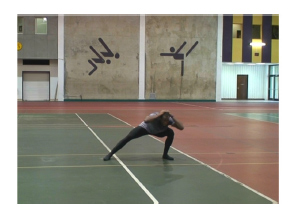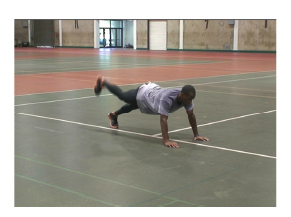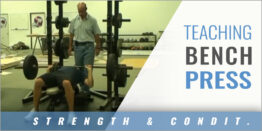|
Using General Strength in the Training Regimen
General Strength exercises are exercises that develop strength, using the athlete's bodyweight as the sole load or resistance. In general strength work no external loading is applied. General strength exercises can run the gamut from simple traditional exercises like the pushup or the situp, to highly advanced, complex exercises designed to address very specific goals. These exercises train a variety of abilities and should comprise a large part of any strength development program. Types of General Strength Exercises
Sample General Strength Applications
3. Pillar Circuit. This circuit should include a variety of exercises that concentrate on the abdominals, the lumbar spine, and the obliques. 12-16 total sets, with 20 seconds work/20 seconds rest being a good starting point. Suggested exercises can include situps, crunches, back hyperextensions, sideways situps, crunches and hyperextensions combined with twisting movements, etc.
5. Planks. Plank exercises require an athlete to maintain a stable posture while assuming an inherently These by no means are representative of all of the variety of exercises and workout constructs available to the coach, but are meant as a starting point to demonstrate potential applications of this type of work. Once the coach gains experience in administering circuits like these, one can quickly adapt them to a variety of goals by choosing different exercises, work intervals, and rest intervals. |
|
|





 include 12 total sets of work, with 20 seconds of work/40 seconds of rest being a good starting point for most levels of athletes.
include 12 total sets of work, with 20 seconds of work/40 seconds of rest being a good starting point for most levels of athletes.
 4. Duck Walks. These exercises are a good but simple way to train connective tissue. Athletes assume a deep squat position and without rising, walk 10 meters at a slow but consistent pace. The entire circuit consists of 2 sets of 10 meters each of forward walks, backwards walks, and lateral walks to each side.
4. Duck Walks. These exercises are a good but simple way to train connective tissue. Athletes assume a deep squat position and without rising, walk 10 meters at a slow but consistent pace. The entire circuit consists of 2 sets of 10 meters each of forward walks, backwards walks, and lateral walks to each side. unstable position. For example, an athlete might assume a pushup position, prone, with weight on the hands and feet and the body held straight. Once assuming this position, the athlete slowly raises and lowers one foot while maintaining stability in the remainder of the body. Other variations might place the body in a supine position or on the side, with the hands or elbows supporting body weight. 8-10 exercises, using 15 seconds of work with each leg, followed by 15 seconds of rest are suggested.
unstable position. For example, an athlete might assume a pushup position, prone, with weight on the hands and feet and the body held straight. Once assuming this position, the athlete slowly raises and lowers one foot while maintaining stability in the remainder of the body. Other variations might place the body in a supine position or on the side, with the hands or elbows supporting body weight. 8-10 exercises, using 15 seconds of work with each leg, followed by 15 seconds of rest are suggested.


